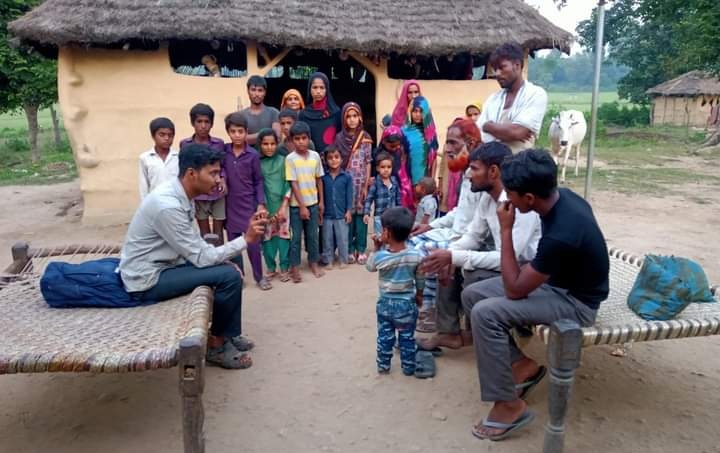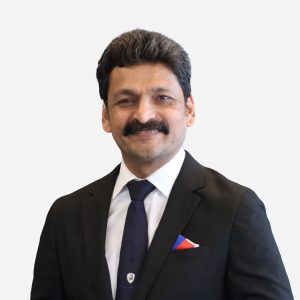From winning bronze at an International Olympiad to teaching forest dwellers in Uttarakhand, the story of a small-town boy

Shail Shukla
Dehradun/Pune, February 18, 2021: This may sound like a story of reverse migration. Ashish Raut, a small-town boy, who came to Pune city to complete his study and pursue his passion for bird watching and becoming an Ornithologist, is now making a difference in the world and changing the lives of people through his work.
Ashish completed his Standard 12 examination from Sevasadan Higher Secondary School from Burhanpur in Madhya Pradesh. His father Baban Raut worked as a peon at a sugar factory and has now been promoted to a clerk. His mother Mira Raut is a teacher at Government Kanya Shala (government girls school). He has one elder brother.
The winner of a bronze medal at the International Environment Project Olympiad held in Baku for his ‘Birds of Burhanpur’ project, Ashish developed an inferiority complex after moving to a city like Pune.
“I started thinking that bird watching is not for me. I came from a lower-middle-class family and thus, after completing my B.Sc from Fergusson College, I left the city and went to do my masters in forestry from Forest Research Institute located in Dehradun”, he said.
“After graduation, the thought of doing something for the tribal community made me restless. Hence, I decided to pursue a masters’ degree in forestry,” Ashish said.
Thus, Ashish began an initiative called ‘MAEE’ in 2019 to serve and educate the Van Gujjars, a tribal community in Uttarakhand.
‘MAEE’ initiative
Recalling the moment when he decided to start this initiative, he said, “I came across various obstacles while working with government schools in Uttarakhand. Teachers were not supportive, and parents were uncooperative. I was frustrated when my friend told me that at least the villages here have schools, but the village he comes from neither has a school nor a medical facility.”
“Initially, I was not ready to buy his argument but when I visited his village, I was completely shocked. His village was situated near Rajaji National Park which comes under the forest area. And the tribals living there are called ‘Van Gujjars’,” Ashish informed.
Van Gujjar community
“Van Gujjars are the same Gujjars as we see in Gujarat and Rajasthan. But historically, they separated and migrated to Himachal Pradesh, Uttarakhand, Punjab and Jammu & Kashmir. During the migration, they also conceived their unique dialect, which is a mix of Punjabi, Marwari, and Dogri,” Ashish explained.
“This community was dependent on migration activities for their subsistence. They lived at the Shivalik foothills during winters and migrated to mid-Himalayas in Alpine meadows during summers so that their livestock can get enough green fodder. However, this community of forest dwellers was destabilized after Independence when the country decided to create various national parks. Many activities became illegal, and the community dependent on migration for livelihood has been forced to live a sedentary life,” he added.
Work and reach of MAEE
MAEE held an awareness programme to make the Van Gujjar community aware of the importance of possessing documents like Aadhaar Cards or Ration Cards. Since they live in the forest regions, they are away from the hustle-bustle of the villages.
Ashish informed that the ‘MAEE’ initiative aims is to bridge this gap by working on two levels – first to work on the problem of inaccessibility by developing community-based learning centres called Shiksha Protsahan Kendra and another on spreading awareness about education amongst the community through various cultural and educational activities. the initiative aims to create a team of young and motivated volunteers willing to work for their community’s education.
What does MAEE mean?
“The term ‘MAEE’ has been taken from the Van Gujjar community’s dialect. Considering the importance of contextualization of our work with local culture and traditions, we named our program ‘MAEE’. In the Van Gujjar community, MAEE is the person who takes care of the buffaloes right from cutting leaves, milking the buffaloes, nourishing them, and taking care of every buffaloes’ needs. As the Van Gujjar community’s life and culture revolve around their buffaloes, the significance of Maee is incomparable to any other person of the community. Taking the inspiration from its role, we have named our program MAEE,” said Ashish.
“Children at MAEE are between 5-year-old and 14-year-old and they study together. Since children have different learning levels, they are segregated based on their own learning level. Different teaching methods which are activity-based are being practised at the centre,” he said.
Teaching-learning method
“We practice three-way learning at MAEE. Children to children, children to a teacher, and teacher to children. We are against rot learning and promote activity-based learning. For example, we would write zero on a paper and ask students to bring the number of pebbles mentioned in the paper. So, students will go to the ground and come without pebbles. This way, we tried to incorporate the concept of zero among them. Our teachers too learn and develop themselves every day. They engage themselves in various workshops to develop their teaching techniques and increase their knowledge,” said Ashish.
“There are currently six active centres, in which, around 150 students are enrolled. If proper coordination and support are given to us, we will increase the number of centres. We are also working towards a library which will increase the understanding of youth in various socio-political aspects,” he further informed.
“Initially, we are working on education. But we are also planning to start the initiative for menstrual hygiene and other aspects”, Ashish added.
“However, these initiatives will depend on the funding we get. Managing one centre needs around Rs 60,000 to Rs 70,000, and since funding is based on individual donations, planning and commencement will depend on the amount we would receive,” said Ashish.
Ashish started the ‘MAEE’ initiative two years ago and has come a long way since. The person, who once dreamt of becoming an Ornithologist, went on to teach forest dwellers with the vision of making a difference with his knowledge and capacity.









